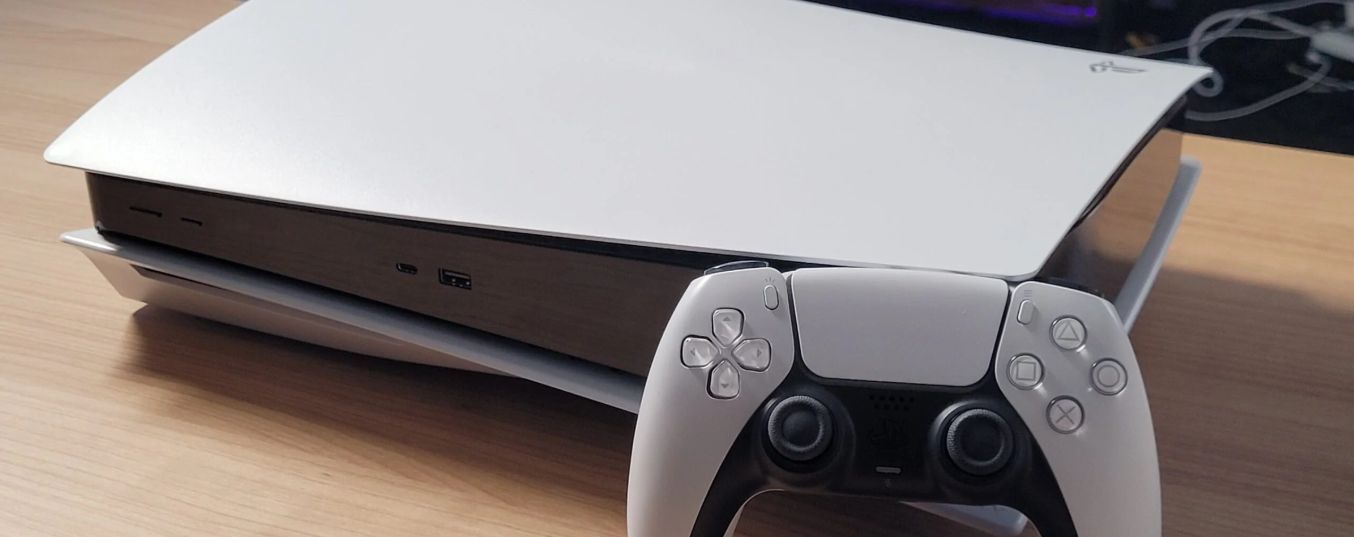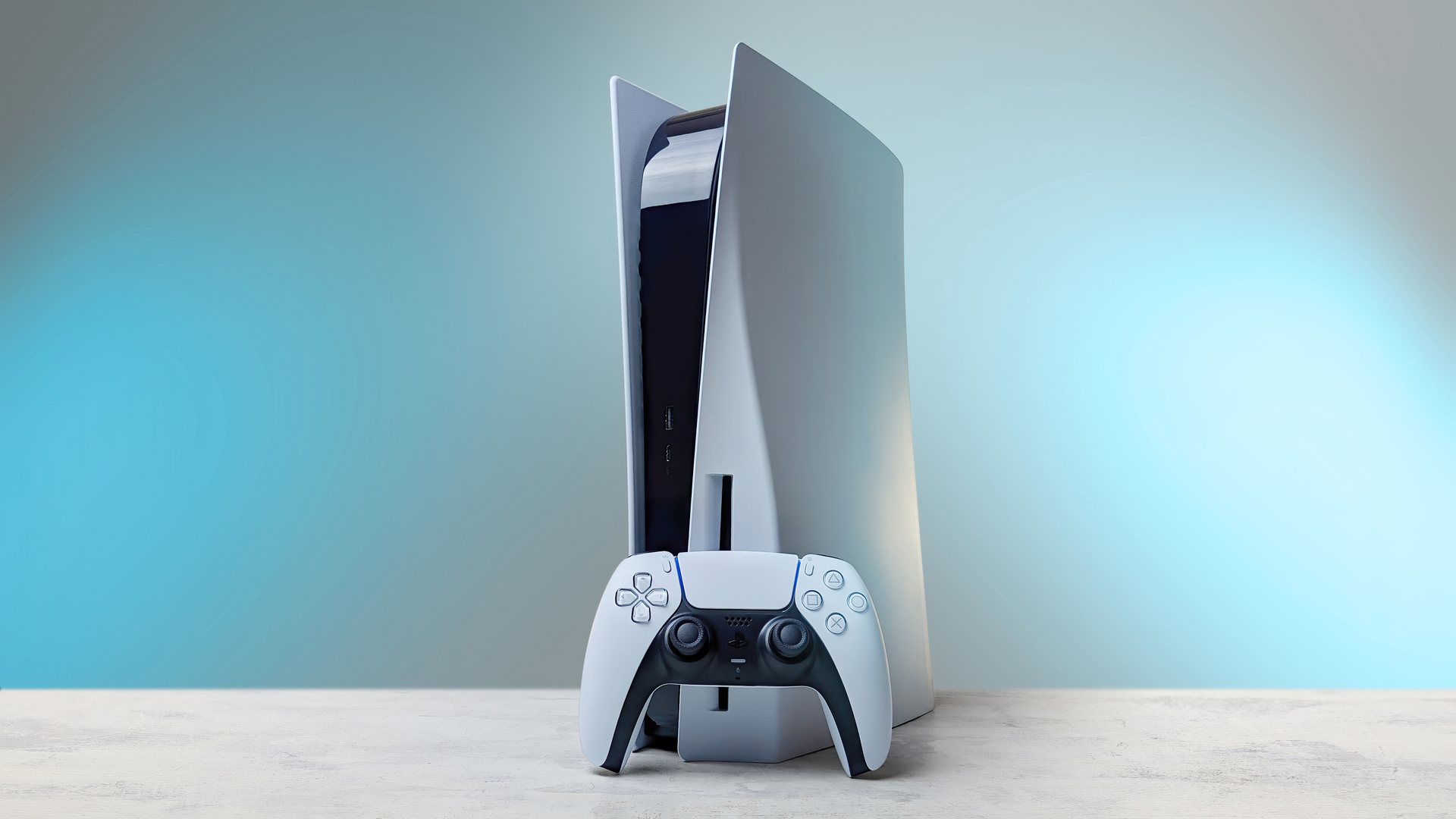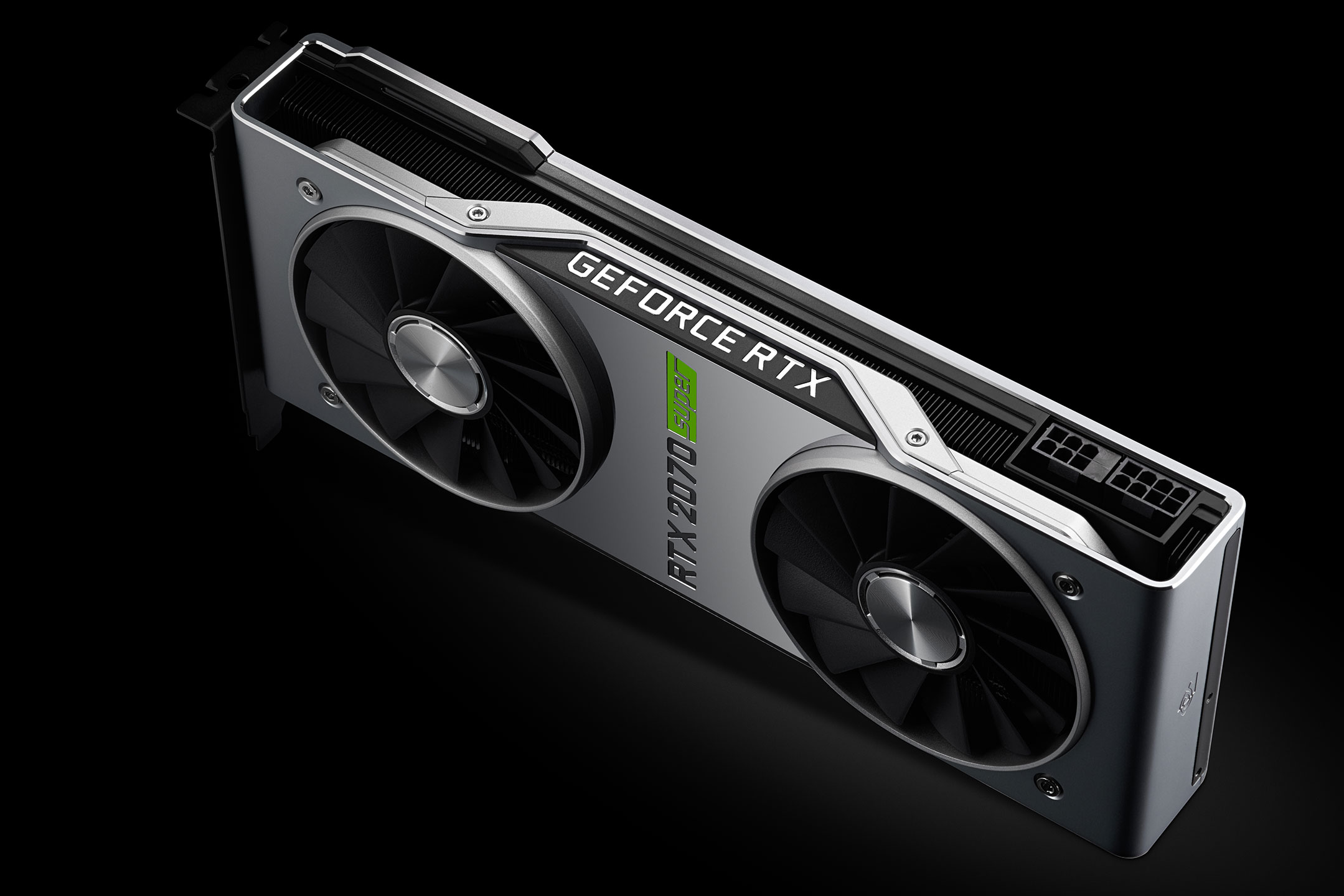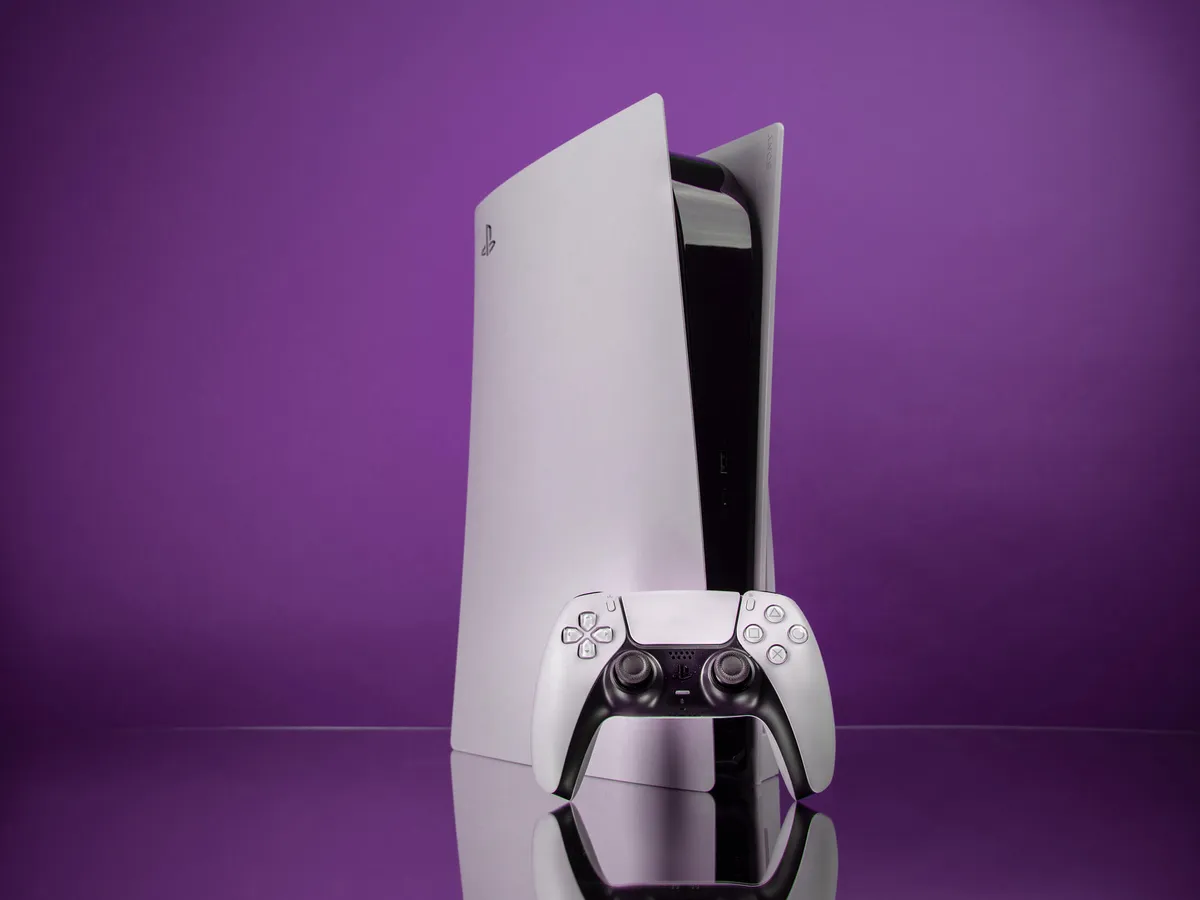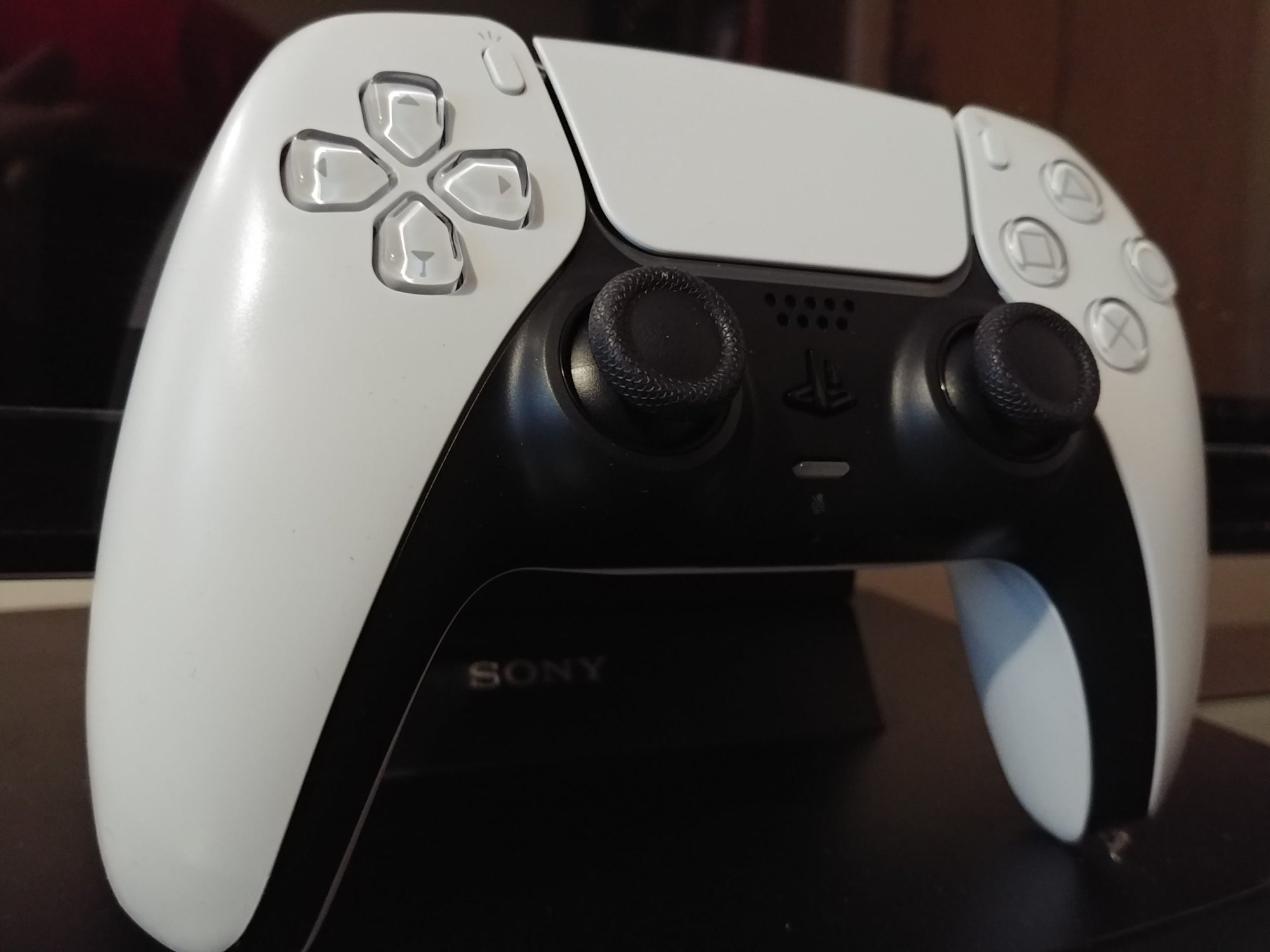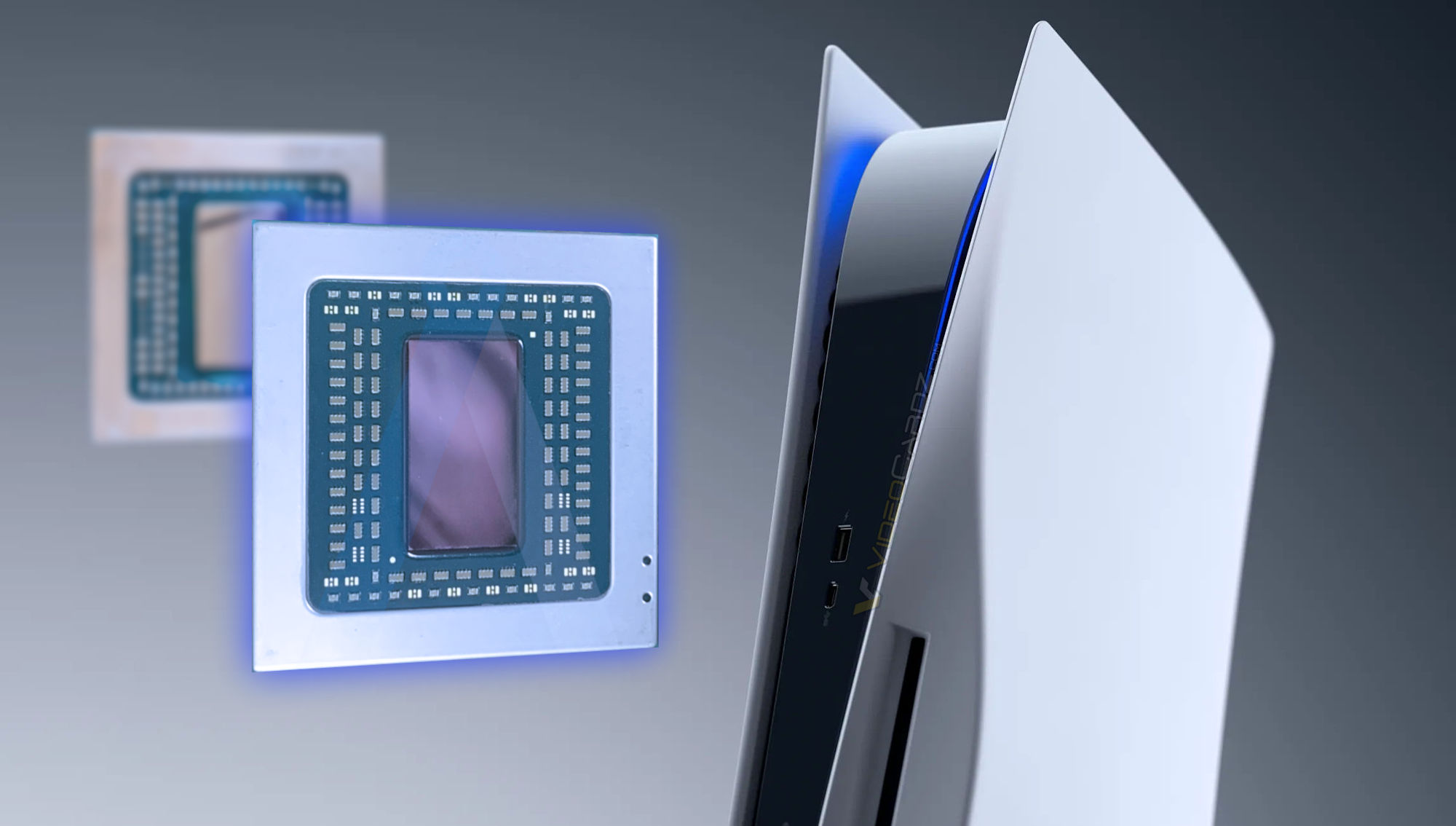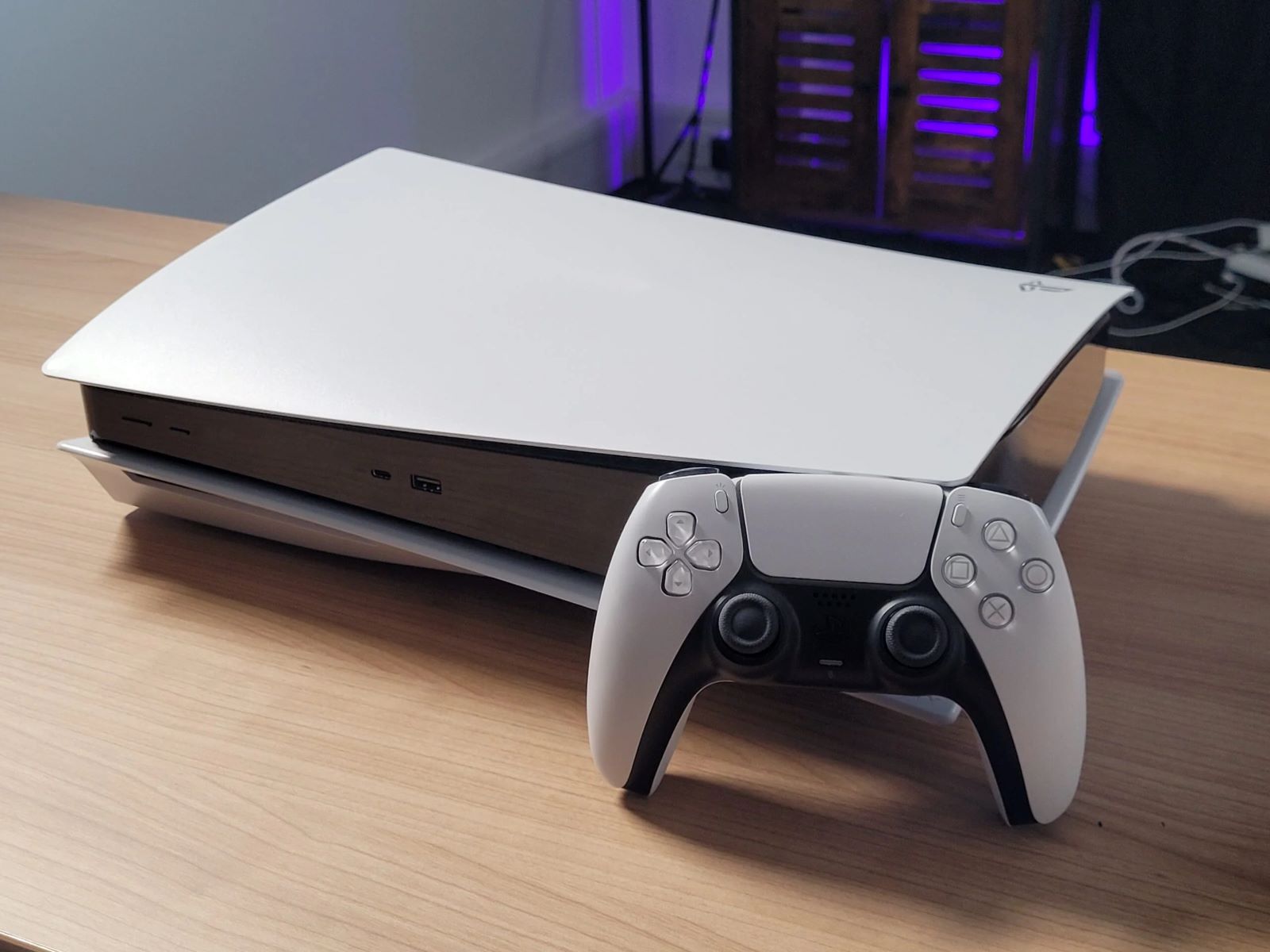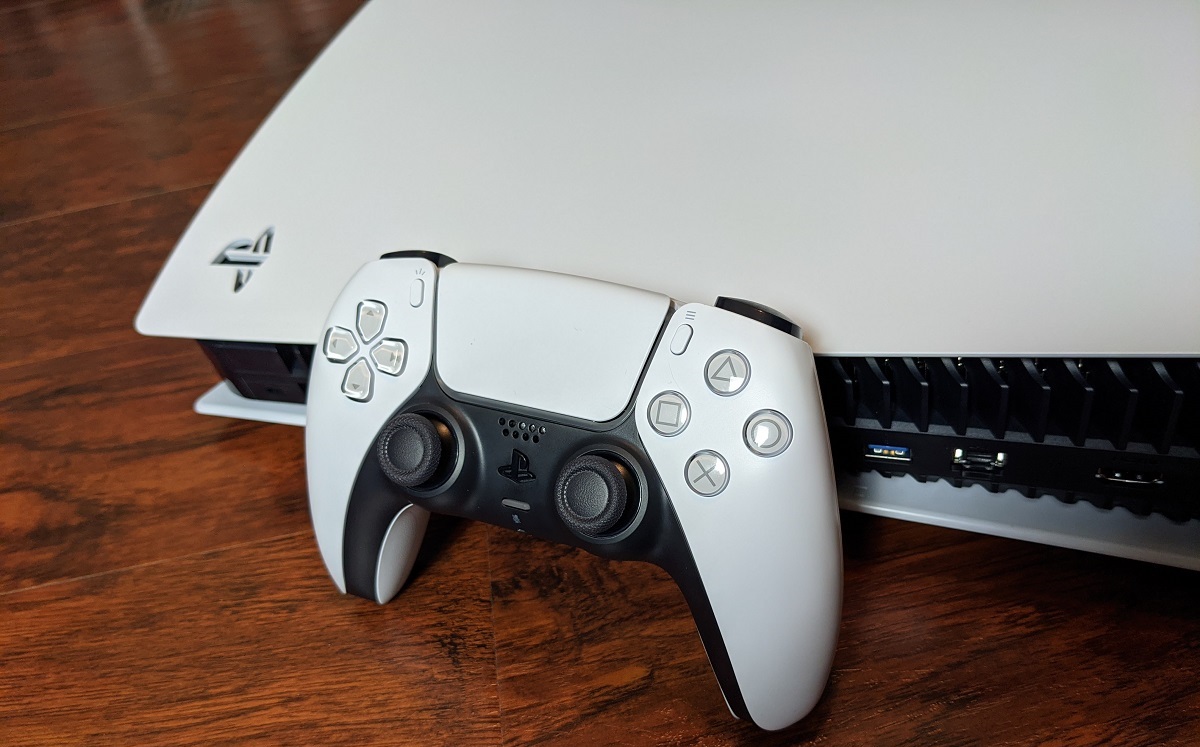Introduction
Welcome to the world of gaming consoles, where immersive gaming experiences come to life through powerful hardware and innovative technologies. Among the fundamental components that contribute to the prowess of these gaming machines is the Graphics Processing Unit (GPU).
The GPU plays a vital role in rendering realistic graphics, creating smooth animations, and enhancing overall visual quality in video games. It handles the complex calculations required to generate stunning visuals, delivering an immersive gaming experience that captivates players.
One of the most highly anticipated gaming consoles of recent times is the PlayStation 5 (PS5). Developed by Sony, the PS5 has garnered significant attention due to its impressive hardware specifications, including its GPU.
In this article, we will delve into the world of GPUs and explore what sets the PS5 GPU apart from its predecessors and competitors. We will discover the key specifications of the PS5 GPU, compare it to other GPUs in the market, and discuss its performance and capabilities. Additionally, we will look towards the future to see what developments lie ahead for GPU technology.
Whether you are a gaming enthusiast looking to stay informed or a curious individual eager to learn about the latest advancements in gaming hardware, this article will provide you with valuable insights into the world of GPUs and the PS5.
The Importance of Graphics Processing Units (GPUs) in Gaming Consoles
In the world of gaming consoles, the Graphics Processing Unit (GPU) holds a critical role in delivering stunning visuals and immersive gaming experiences. The GPU is responsible for rendering graphics, handling complex computations, and optimizing performance, all of which are crucial for creating lifelike virtual worlds.
One of the primary functions of the GPU is to process and render 3D graphics. Video games have become increasingly realistic over the years, with intricate environments, detailed characters, and lifelike animations. The GPU plays a crucial role in creating and displaying all these visual elements, ensuring that gamers are fully immersed in their gaming worlds.
GPUs are designed to handle large amounts of data and perform parallel processing. This capability is especially important in gaming consoles, where real-time graphics rendering is necessary. The GPU can process multiple tasks simultaneously, allowing for smoother frame rates and seamless transitions between scenes.
Furthermore, GPUs are instrumental in implementing advanced graphical effects such as dynamic lighting, realistic shadows, and complex textures. These effects enhance the visual quality of games, making them more visually appealing and enhancing the overall gaming experience.
Another key aspect of GPUs is their ability to optimize performance and efficiency. Gaming consoles have limited resources, and the GPU plays a crucial role in managing these resources effectively. By efficiently distributing processing power and memory, the GPU ensures that games run smoothly and without lag, providing a seamless and enjoyable gaming experience.
GPUs are not only responsible for visual processing but also contribute to other aspects of gaming. They handle physics calculations, audio rendering, and even AI computations in certain games. These additional tasks add depth and realism to games, making them more engaging and immersive for players.
As gaming technology continues to evolve, so too do GPUs. With each new console generation, GPUs become more powerful, enabling developers to push the boundaries of graphics and deliver even more visually stunning games. The advancements in GPU technology have played a significant role in the growth and popularity of gaming, captivating audiences worldwide.
In the next sections, we will explore the GPU of the PlayStation 5 (PS5) and understand its importance in shaping the future of gaming consoles.
Understanding the PlayStation 5 (PS5) GPU
The PlayStation 5 (PS5) is the latest gaming console developed by Sony, and its GPU is one of its standout features. The PS5 GPU is built on AMD’s RDNA 2 architecture, which brings significant advancements in performance, efficiency, and graphics capabilities.
One of the key highlights of the PS5 GPU is its impressive raw power. It boasts 10.28 teraflops of computing power, making it one of the most powerful GPUs in the gaming console market. This immense power allows the PS5 to handle complex graphical computations with ease, resulting in breathtaking visuals and smooth gameplay.
The PS5 GPU also features a custom-designed unit known as the “Compute Unit.” This unit is specifically optimized for gaming and delivers enhanced performance and efficiency. The Compute Units work in harmony to process graphics and perform a wide range of calculations, ensuring that the console can handle the demands of modern games.
Another notable feature of the PS5 GPU is its support for hardware-accelerated ray tracing. Ray tracing is a technique used in computer graphics to simulate the behavior of light in real-time. By accurately tracing the path of light rays, ray tracing can create realistic reflections, shadows, and lighting effects, resulting in a more immersive and lifelike gaming experience.
The PS5 GPU also benefits from technologies such as variable rate shading (VRS) and mesh shading. VRS allows the GPU to allocate more resources to the important areas of a scene, while reducing the level of detail in less significant areas. This technique improves performance without sacrificing visual quality. Mesh shading, on the other hand, enables detailed geometry to be efficiently rendered, resulting in smoother and more detailed objects in games.
With its powerful GPU, the PS5 boasts support for 4K resolution at 60 frames per second (fps), and even has the capability to achieve 8K resolution in certain games. This level of graphical fidelity offers players a truly immersive and visually stunning experience.
In addition to graphics, the PS5 GPU also handles other tasks such as audio processing and computational tasks for game physics and artificial intelligence. This integration allows for efficient utilization of system resources and ensures a seamless and cohesive gaming experience.
The PS5 GPU represents a significant leap forward in performance and graphical capabilities, setting a new standard for gaming consoles. Its advanced architecture, raw power, and support for cutting-edge technologies make it a powerhouse in the gaming industry.
Next, we will take a closer look at the key specifications of the PS5 GPU and compare it to other GPUs in the market.
Key Specifications of the PS5 GPU
The PlayStation 5 (PS5) is equipped with a powerful Graphics Processing Unit (GPU) that drives its impressive graphical performance. Let’s explore the key specifications of the PS5 GPU that contribute to its cutting-edge capabilities.
The PS5 GPU is built on AMD’s RDNA 2 architecture, which provides a foundation for enhanced performance and advanced features. It features 36 Compute Units (CUs) and operates at a frequency of up to 2.23 GHz. This combination of CUs and clock speed allows the GPU to deliver remarkable processing power, resulting in high-quality graphics and smooth gameplay.
The PS5 GPU is capable of achieving a peak performance of 10.28 teraflops. This metric measures the number of floating-point operations a GPU can perform per second. With its high teraflops count, the PS5 GPU can handle complex graphical computations, enabling developers to create visually stunning and immersive games.
Another essential feature of the PS5 GPU is its support for real-time hardware-accelerated ray tracing. Ray tracing simulates the path of light rays in a scene, resulting in more realistic reflections, shadows, and lighting effects. The PS5 GPU’s dedicated ray tracing hardware enhances visual fidelity, elevating the overall gaming experience to new heights.
The PS5 GPU also supports variable rate shading (VRS), a rendering technique that optimizes performance and efficiency. VRS selectively reduces the level of detail in less significant areas of a scene, allowing the GPU to allocate more resources to crucial aspects. This dynamic allocation of resources enhances overall performance without compromising visual quality.
Additionally, the PS5 GPU includes hardware-accelerated support for mesh shading. Mesh shading improves performance by efficiently rendering complex geometry, resulting in smoother and more detailed objects in games. This capability allows developers to create visually impressive and highly detailed environments.
Furthermore, the PS5 GPU supports a variety of display resolutions. It is capable of delivering gaming experiences in stunning 4K resolution at up to 60 frames per second (fps), ensuring sharp visuals and smooth gameplay. The GPU can even achieve 8K resolution in select games, pushing the boundaries of graphical fidelity in console gaming.
The PS5 GPU also supports advanced features such as variable refresh rate (VRR) and high dynamic range (HDR). VRR synchronizes the display’s refresh rate with the GPU’s output, resulting in smoother gameplay with reduced screen tearing. HDR enhances the color range and contrast, producing vibrant and lifelike visuals.
Overall, the key specifications of the PS5 GPU highlight its exceptional power and capabilities. Its advanced architecture, high teraflops count, support for ray tracing, mesh shading, and various display resolutions collectively contribute to a groundbreaking gaming experience.
In the next section, we will compare the PS5 GPU to other GPUs in the market, providing insights into its performance and position within the gaming industry.
What GPU Is the PS5 Equivalent To?
When it comes to comparing GPUs, it’s important to note that direct equivalencies can be challenging due to various factors such as architectural differences, optimization techniques, and console-specific features. However, it is possible to draw comparisons based on performance and capabilities.
In terms of performance, the PS5 GPU is often likened to high-end PC GPUs such as the NVIDIA GeForce RTX 2080 Super or the AMD Radeon RX 5700 XT. These PC GPUs provide similar levels of graphical performance, allowing for smooth gameplay, high-quality visuals, and support for features like ray tracing.
It’s worth mentioning that the PS5 GPU, despite being comparable to these high-end PC GPUs, offers a unique advantage in terms of console optimization. Console game developers have the opportunity to maximize the performance of the PS5 GPU by leveraging its architecture and advanced features. This optimization can result in games that are specifically tailored to take advantage of the PS5’s hardware capabilities, offering a more efficient and optimized gaming experience compared to PC counterparts.
The PS5 GPU’s ability to handle real-time ray tracing is another significant factor. While there are PC GPUs that support ray tracing, the PS5 GPU’s hardware-accelerated ray tracing brings an extra level of realism and immersion to the gaming experience. This makes it a standout feature and sets the PS5 GPU apart from many PC GPUs.
It’s essential to note that as technology advances, new GPUs will be released, pushing the boundaries of performance and capabilities. As a result, the PC GPUs that the PS5 is currently equivalent to may become outdated in the future.
Nevertheless, it’s clear that the PS5 GPU stands as a formidable contender in the gaming industry. Its comparable performance to high-end PC GPUs, optimization potential, and hardware-accelerated ray tracing make it a significant player in delivering cutting-edge gaming experiences.
In the next section, we will explore the performance and capabilities of the PS5 GPU in more detail, providing a comprehensive understanding of its gaming prowess.
Comparing the PS5 GPU to Other GPUs in the Market
When it comes to comparing the PlayStation 5 (PS5) GPU to other GPUs in the market, it’s important to consider the performance, features, and optimizations that different GPUs offer. While direct comparisons can be challenging due to architectural differences and manufacturer-specific optimizations, we can still examine the overall capabilities and positioning of the PS5 GPU.
In terms of performance, the PS5 GPU stands out as one of the most powerful GPUs available in the console gaming market. With its 10.28 teraflops of computing power, the PS5 GPU is capable of delivering stunning visuals, high frame rates, and smooth gameplay. It can handle graphically demanding games, offering an immersive gaming experience.
When comparing the PS5 GPU to GPUs in the PC gaming market, it is often considered comparable to high-end GPUs like the NVIDIA GeForce RTX 2080 Super or the AMD Radeon RX 5700 XT. These PC GPUs provide similar levels of performance and can deliver impressive graphics and high frame rates.
However, it is important to note that direct comparisons can be challenging due to factors like architectural differences and console-specific optimizations. The PS5 GPU benefits from optimizations made by console game developers, taking full advantage of its architecture and features, resulting in a more efficient and optimized gaming experience compared to PCs.
One area where the PS5 GPU shines is its support for hardware-accelerated ray tracing. While ray tracing is also available on high-end PC GPUs, the PS5’s dedicated ray tracing hardware enhances the quality and realism of lighting, reflections, and shadows in games. This gives the PS5 GPU an edge in delivering stunning visuals and immersive environments.
Another aspect to consider is the availability of exclusive features and optimizations for the PS5 GPU. Game developers have the opportunity to harness the power of the PS5 GPU to create unique experiences tailored specifically for the console. This can result in games that fully utilize the hardware capabilities of the PS5, providing a distinct gaming experience not available on other platforms.
It’s important to remember that the GPU market is constantly evolving, with new GPUs being released regularly. As technology advances, newer GPUs may surpass the performance and capabilities of the PS5 GPU. However, the PS5’s powerful hardware and optimized software bring console gaming to new heights, offering a compelling gaming experience.
In the next section, we will explore the performance and capabilities of the PS5 GPU in more detail, shedding further light on its role in shaping the future of gaming consoles.
Performance and Capabilities of the PS5 GPU
The PlayStation 5 (PS5) GPU boasts impressive performance and a range of capabilities that set it apart as a powerful gaming console. Let’s dive into the performance and capabilities of the PS5 GPU and explore the impact they have on gaming experiences.
With its raw power of 10.28 teraflops, the PS5 GPU delivers incredible performance, allowing for high-quality visuals and smooth gameplay. Its advanced architecture, combined with 36 Compute Units operating at a frequency of up to 2.23 GHz, enables the efficient processing of complex graphical computations.
One of the key features of the PS5 GPU is its support for real-time hardware-accelerated ray tracing. The dedicated ray tracing hardware enhances lighting, reflections, and shadows, resulting in more realistic and immersive visuals. This capability brings a new level of realism and detail to games, elevating the overall gaming experience.
The PS5 GPU also supports variable rate shading (VRS) and mesh shading, which contribute to improved performance and graphics rendering. VRS allows for more efficient distribution of resources, allocating more power to important areas of a scene and reducing detail in less significant areas. Mesh shading aids in the rendering of detailed geometry, resulting in smoother and more detailed objects in games.
Furthermore, the PS5 GPU can handle gaming at various resolutions. It supports 4K resolution at up to 60 frames per second (fps), providing crisp and detailed visuals with smooth motion. In certain games, the PS5 GPU can even achieve 8K resolution, pushing the boundaries of graphical fidelity.
Aside from graphics, the PS5 GPU’s capabilities extend to other areas of gaming. It enhances audio processing, resulting in immersive and realistic soundscapes that complement the visuals. The GPU also assists in computational tasks related to game physics and artificial intelligence, allowing for more interactive and dynamic gaming experiences.
Another crucial factor contributing to the PS5 GPU’s performance lies in its custom integration with the PS5’s system architecture. The tight integration between the CPU and GPU ensures efficient communication and data transfer, reducing latency and maximizing overall system performance.
Through its impressive performance and capabilities, the PS5 GPU opens the doors to truly immersive and visually stunning gaming experiences. It empowers game developers to create intricate virtual worlds, realistic characters, and breathtaking environments that captivate players.
As developers harness the power of the PS5 GPU and unlock its full potential, we can expect to see even more visually stunning and technologically advanced games in the future. The PS5 GPU sets a new standard for console gaming, fusing performance and innovation to create unforgettable gaming experiences.
In the final section, we will explore future developments in GPU technology and how they may shape the gaming landscape.
Future Developments in GPU Technology
The world of GPU technology is constantly evolving, pushing the boundaries of what is possible in gaming and other industries. Looking ahead, several exciting developments in GPU technology are poised to shape the future of gaming and graphics.
One prominent trend in GPU technology is the continued advancement of ray tracing capabilities. As GPUs become more powerful, ray tracing algorithms can be implemented in real-time with more accuracy and complexity. This will result in even more realistic lighting, reflections, and shadows, enhancing the visual fidelity of gaming worlds.
Another area of focus for future GPU development is increased performance and efficiency. GPU manufacturers are constantly striving to improve power efficiency and reduce heat generation. This will not only allow for more powerful GPUs but also enable them to be integrated into smaller and more portable devices, making high-quality gaming experiences more accessible to a wider audience.
The integration of artificial intelligence (AI) and machine learning (ML) capabilities into GPUs is another avenue of future development. GPUs are well-suited for the parallel processing required for AI and ML tasks, enabling advancements in areas such as real-time AI-driven physics simulation, improved game character behaviors, and more dynamic and realistic game worlds.
As display technologies improve, GPUs will also need to evolve to support higher resolutions and refresh rates. Future GPUs will likely accommodate the demands of 8K, and potentially even higher resolutions, delivering incredibly detailed visuals. Additionally, GPUs will continue to support technologies like variable refresh rate (VRR) and high dynamic range (HDR), further enhancing the overall visual experience.
Virtual reality (VR) and augmented reality (AR) are burgeoning fields in gaming and entertainment. GPUs will play a crucial role in driving the graphics required for immersive VR and AR experiences. As VR and AR technology advances, future GPUs will be optimized to handle the complex rendering and processing requirements of these emerging platforms.
Lastly, GPU technology will continue to evolve in terms of scalability and compatibility. With advancements in cloud gaming and streaming services, GPUs will need to adapt to deliver seamless gaming experiences across a variety of devices and platforms. This includes more efficient compression algorithms and improved hardware acceleration for streaming and remote gaming.
The future of GPU technology holds immense potential for innovation and breakthroughs in gaming and beyond. As developers and manufacturers strive to push the limits of what GPUs can achieve, we can anticipate increasingly immersive, visually stunning, and technologically advanced gaming experiences that redefine the way we interact with virtual worlds.
With each new generation of GPUs, gaming consoles like the PlayStation 5 (PS5) will continue to benefit from these advancements, providing players with unparalleled graphics, performance, and unforgettable gaming experiences.
Conclusion
The PlayStation 5 (PS5) GPU represents a significant milestone in the world of gaming consoles. With its impressive performance, advanced features, and cutting-edge capabilities, the PS5 GPU is at the forefront of delivering immersive and visually stunning gaming experiences.
Throughout this article, we explored the importance of Graphics Processing Units (GPUs) in gaming consoles and gained an understanding of the PS5 GPU’s significance in shaping the future of console gaming. We discussed its key specifications, compared it to other GPUs in the market, and delved into its performance and capabilities.
The PS5 GPU’s powerful hardware, architecture, and support for hardware-accelerated ray tracing set a new standard for graphical performance in gaming consoles. It offers comparable performance to high-end PC GPUs and benefits from console-specific optimizations that enhance the overall gaming experience.
Furthermore, the PS5 GPU’s compatibility with technologies such as variable rate shading (VRS) and mesh shading, along with its support for various resolutions and advanced features like high dynamic range (HDR), offer incredible visual fidelity and immerse players in lifelike virtual worlds.
Looking to the future, the development of GPU technology will continue to drive innovation in gaming. Advancements in ray tracing, performance, efficiency, AI integration, and scalability will further elevate the gaming experience, bringing even more immersive and realistic visuals to players.
As gaming technology evolves, the PS5 GPU demonstrates its role as a powerful force in shaping the gaming industry. Its capabilities, combined with console-specific optimizations, offer unique and optimized gaming experiences that set it apart from other GPUs in the market.
Whether it’s the breathtaking graphics, smooth frame rates, or enhanced realism, the PS5 GPU delivers on its promise of pushing the boundaries of gaming immersion. As gamers venture into the world of the PS5, they can expect to embark on unforgettable gaming journeys filled with stunning visuals, captivating gameplay, and an unrivaled level of excitement.
The PS5 GPU is a testament to the continuous advancements in GPU technology and serves as a preview of what gaming consoles have yet to offer. As technology progresses, we can anticipate even greater breakthroughs, pushing the limits of graphics processing and elevating gaming experiences to unimaginable heights.







